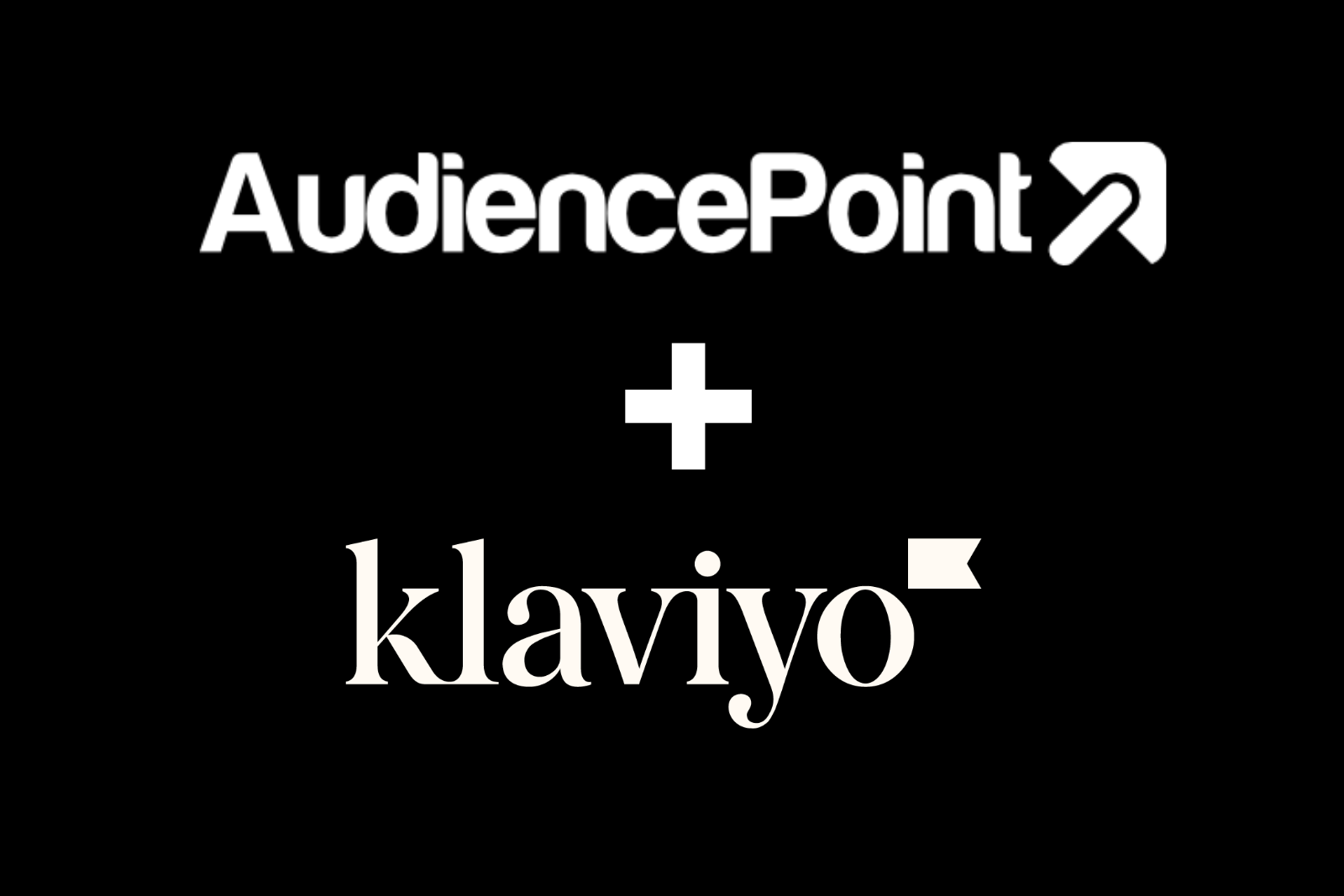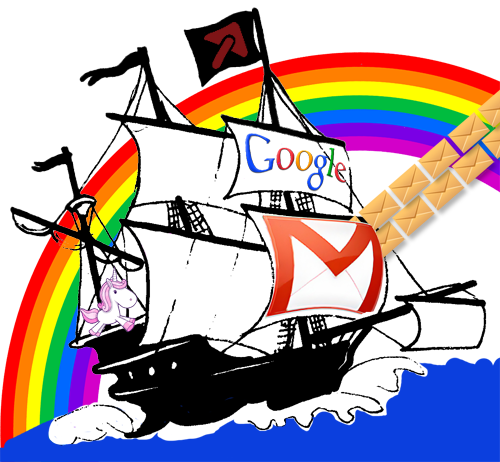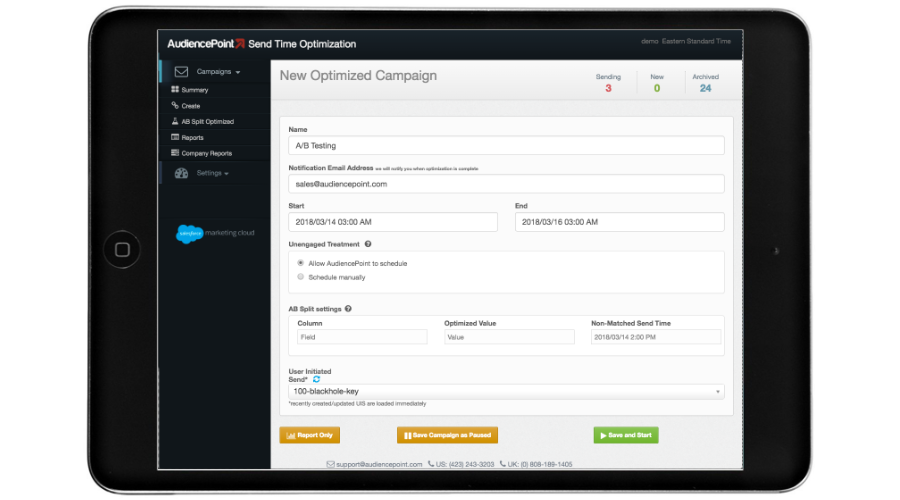AudiencePoint is thrilled to announce our new integration with Klaviyo! AudiencePoint is looking for partners to pilot our...
If you’re looking to take your company to the next level, creating an email marketing customer engagement strategy will have many benefits. This article will explain the benefits of email marketing, provide examples of effective email marketing, and explain ways to optimize marketing emails to improve customer engagement.
What is Email Marketing and What Are Its Benefits?
Email marketing is a way for a business to promote its products and services and keep customers engaged with what is happening with the company. Sending out regular marketing emails helps influence prospective customers to buy and helps keep your company at the top of current or previous customer’s minds. Email marketing helps build loyalty and trust that increases sales and keeps customers coming back.
Email marketing involves sending emails to a list of email subscribers. These subscribers are made up of current or past customers and others who are interested in your products or services. The most common form of email marketing is sending out regular newsletters with company updates, notifications about upcoming sales, and other valuable information regarding your industry. Other types of marketing emails include:
- Dedicated emails: Dedicated emails are standalone emails that promote an offer. These emails are usually built around a single call-to-action and are results driven.
- Lead nurturing emails: These are usually a series of emails that provide value to new leads and guides them towards making a purchase.
- Re-engagement emails: If your metrics show that someone has been inactive and hasn’t opened your emails for a while, a re-engagement campaign can be useful. Re-engagement emails provide a spark to bring your business back to these email subscriber’s minds.
- Transactional emails: These emails are sent after someone makes a purchase. You should put extra effort into transactional emails to provide all the information customers will need and say thank you for their purchase. This helps reassure your buyers that they made the right decision.
- Welcome emails: This is a one-time email that someone receives upon signing up for your email list. The welcome email should create a good first impression and get your new email subscriber interested in reading future emails from your company. Putting extra effort into your welcome email to make a good first impression will pay off in the long run.
Properly executing these types of marketing emails will keep your email subscribers happy and engaged with what is happening with your company. This leads to customers having a more positive attitude toward your company, which increases sales over time.
Email Marketing Examples
To better understand email marketing, here are some examples of how it can be used to create customer engagement that leads to sales.
Example #1
An example of email marketing is a financial advisor getting a new lead from someone interested in preparing for retirement. The financial advisor can then send a series of lead nurturing emails such as the following:
- Email 1: Welcome Email – (Sets up the series of emails to follow)
- Email 2: The Importance of Creating a Plan for Your Retirement
- Email 3: Tips for Planning Your Post-Retirement Budget
- Email 4: What You Need to Know About Social Security
- Email 5: Case Study – Retirement Success When Working with a Financial Advisor
- Email 6: How We Can Help with Retirement Planning – (Using a call to action to set up a financial advisement appointment)
- Email 7: Follow-up if the prospect doesn’t convert
This series of marketing emails provides value to prospective customers with useful tips they can implement for their retirement planning and shows how working with a financial advisor can benefit them. Done well, marketing emails can build trust with potential customers and help them see the value your company can provide.
Example #2
Another email marketing example is a company that sells outdoor equipment that recently came out with a new camping tent. The company could send a dedicated email to subscribers providing information about the new tent and its usefulness. The dedicated email would then use a call to action such as a “learn more” or “buy now” button that would bring readers to a landing page with the intention of generating sales.
It is important to realize that the above example would likely only work well if the company had maintained a positive relationship with the subscribers over time. Readers who already know and trust your brand will be more likely to engage with an email discussing a new product or service. Creating a positive relationship with your readers generally involves a long-term email sequence, such as the one described in the first example above.
What Is Engagement-Based Email Marketing?
In order to reap the rewards of email marketing, it is important to create a customer engagement strategy for every email campaign. Engagement-based email marketing focuses on evaluating and improving metrics that have to do with how your email subscribers interact with the emails you send out.
Engagement-based email marketing is crucial for a couple of reasons. One, it generates interest and makes your audience feel more involved with your brand. This type of email marketing aims to gain the attention of email subscribers by providing quality content and optimizing elements such as subject lines and calls to action, so emails create more conversions over time.
Second, and most importantly, engagement-based email marketing creates a higher open rate over time. This is imperative, since a sender’s open rate determines whether emails will be accepted or bounced and whether they will be sent to an inbox or to spam. If an email is rejected or sent to spam, it is already too late to interact with the reader to garner their engagement. Because of this, creating engaging emails with high open rates is one of the most important components of email marketing.
How Does Email Marketing Improve Customer Engagement?
Email marketing improves customer engagement by providing quality and consistent branded content that keeps a company at the top of mind for consumers. Email marketing content helps build trust and consumer loyalty since it creates a positive image of your company. Engaged email subscribers are more likely to make a purchase and be satisfied with their decision.
Why Should Your Emails Create User Engagement?
Marketing emails should create engagement because it benefits both your email subscribers and your company. Good email marketing campaigns will benefit your subscribers by providing them with consistent value straight to their inbox. If email marketing is done right, your subscribers will look forward to receiving emails from you, and they will find reading your emails to be an enjoyable or valuable experience.
User engagement will also benefit your company because engaged email subscribers are more likely to make a purchase or follow other calls to action. This leads to increased revenue and loyal customers who will continue purchasing from you. Customer loyalty is crucial because it’s more cost-effective and easier to retain a current customer than to continually market your product or service to generate new customers.
Additionally, as discussed above, email engagement is important for maintaining a high open rate and avoiding having future marketing emails bounced or sent to spam.
Email Engagement Metrics
One of the most important parts of engagement-based email marketing is analyzing key email engagement metrics. AudiencePoint’s email marketing intelligence software can help you analyze these metrics with real-time optimization, send-time optimization, and analyzing the activity and receptiveness of your email subscribers.
Three Key Metrics Used to Measure Customer Engagement
Three key metrics that measure customer engagement are:
- Open rate
- Click-through rate
- Conversion rate
These metrics show how receptive your subscribers are to receiving emails from you and how well your content is performing to help you achieve your intended outcome. If you successfully optimize these three metrics, you will be on your way to email marketing success.
What Is Open Rate in Email Marketing?
The open rate is the percentage of subscribers who open an email. Knowing your open rate is essential because a low open rate can lead to emails being bounced or sent to spam. The open rate is an indicator of a lot of key information about your email subscribers. Having a high open rate shows that:
- Your subscribers are highly receptive to receiving emails from you
- Your subscribers have a positive opinion of your brand
- Your email content has been providing value
- Your subject lines are effective at getting subscribers to click on emails
- Email subscribers are more likely to follow an intended call to action
If your email marketing open rate is low, you should aim to improve your subject lines, ensure that your email content provides a valuable experience to readers, or find ways to re-engage inactive email subscribers. Email lists should also be regularly cleaned out to get rid of “dead” subscribers who have not opened any targeted emails for a long time. If you are looking for additional help, AudiencePoint’s ListFit tool can help you analyze your email list to find inactive email subscribers who you can remove or target for re engagement.
What Is Click-Through Rate in Email Marketing?
Email marketing click-through rate is the percentage of your email subscribers who clicked a link within your email. Click-through rate is a good metric for how effective your email content was at getting readers to take an intended call to action. The best ways to optimize click-through rate are to:
- Create an email design that is easy to read and clearly displays the intended call to action or next step readers should take
- Provide value within your email copy that builds trust and influence with your readers
- Understand the pain points of your audience to show how your product or service will benefit them
If you take these steps, you can increase your click-through rate significantly.
What Is Conversion Rate in Email Marketing?
Conversion rate is the percentage of email subscribers who complete an intended action after reading your email. While conversions are usually measured in sales, there are many different types of conversions that can be measured, such as subscriptions, submitting a form, signing up for an account, or app installs. To optimize for conversions, ensure that you:
- Create content that generates a high click-through rate
- Ensure your call to action is clear and tells readers what you want them to do next
- Once a link is clicked, ensure that your landing page holds a reader’s attention, meets their expectations, and provides an additional call to action
If you optimize for these areas, you will be on your way to increasing your conversion rates.
Email Automation to Improve Engagement
Another great way you can improve email marketing customer engagement is through email automation. Email automation can help you automatically send emails and segment them based on different groups of email subscribers and the specific actions they take. This helps provide a unique experience to your subscribers that is tailored to their needs and fits their current stage in the purchase process.
Catch Your Readers at the Right Time
Creating the perfect email isn’t the end of optimizing for email engagement. You also have to catch your reader at the right time. This is called send time optimization (STO). For example, if you’re sending emails to readers in different time-zones, they could be receiving them in the middle of the night. AudiencePoint helps you test open-rates for emails sent to your subscribers at different times, so you can predict which day of the week, time of day, etc. has the highest open rates. You can then automate your emails to be delivered during these optimal times.
ActiveCampaign Automation Templates
A great way you can implement email automation is through ActiveCampaign, a marketing automation tool. ActiveCampaign provides several email marketing templates that help automate various areas of email marketing.
An example of an email automation template through ActiveCampaign is a real estate agent who has a prospect sign up for a house showing. An automated email campaign can send an email notification confirming the time and date the prospect signed up for, a reminder before the scheduled house showing, and a follow-up after it has been completed. This helps the prospect stay engaged with the process, so it goes more smoothly. Automating these emails also helps free up the real estate agent’s schedule, so they can focus on other tasks.
Using ActiveCampaign in Combination with AudiencePoint
One of the benefits of tools like ActiveCampaign is they can be used in combination with AudiencePoint’s email marketing software to help boost your email marketing campaign. You can use ActiveCampaign’s email automation templates and, at the same time, analyze the metrics and results you are getting through real-time automation and analytics provided by AudiencePoint.
Conclusion
Creating customer engagement through email marketing can lead to more sales, increased customer loyalty, and better consumer perception of your brand. Your email marketing efforts will have more success when you optimize for key engagement metrics and use an email marketing intelligence software. If you’re ready to start boosting your email marketing engagement, AudiencePoint’s email marketing intelligence software can help you get the results you want to achieve. Contact usr today.




